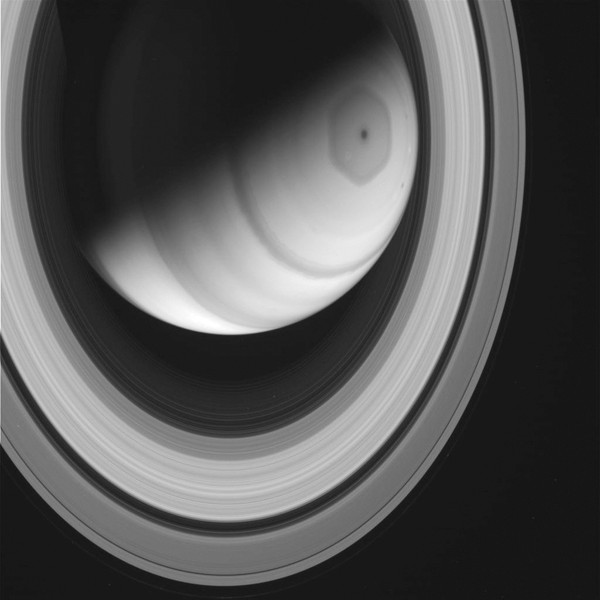
by Timothy Oleson Wednesday, September 3, 2014

This false-color, multi-wavelength image looking down on Saturn's north pole, assembled from Cassini spacecraft data, shows the planet's peculiar but highly stable atmospheric hexagon. Credit: NASA/JPL-Caltech/SSI/Hampton University.
Saturn’s peculiar polar “hexagon” has proven perplexing for scientists studying the atmospheric phenomenon since Voyager 1 and 2 first observed it in the early 1980s. Now, an international team has completed the most thorough study of the six-sided jet stream yet, using images and data collected between 2008 and 2014 by the Cassini spacecraft.
The hexagon, with sides each about 13,800 kilometers long, encompasses jet stream winds that reach top speeds of 120 meters per second as they whip around Saturn’s north pole. In the new study, researchers led by Agustin Sánchez-Lavega of the University of the Basque Country in Bilbao, Spain, reported that the hexagon is a highly stable feature. Despite large differences in seasonal solar insolation at the north pole during the Saturnian year (equal to 29.475 Earth years), the hexagon’s size and rotation have remained virtually unchanged, suggesting the hexagon and the jet stream “extend deep in[to] the atmosphere,” the team wrote in Geophysical Research Letters.
By tracking the precise position of the hexagon’s vertices, the scientists found that the rotation period of the feature during the 5.5 years studied held steady at 10 hours 39 minutes 23.01 seconds (plus or minus 0.01 seconds). This refined an earlier measure by several seconds, and may, the team suggested, “represent the period of Saturn’s internal ‘solid body’ [core] rotation,” a duration that has been difficult to pin down with other methods, including measurements of radio emissions and the planet’s gravitational field.
© 2008-2021. All rights reserved. Any copying, redistribution or retransmission of any of the contents of this service without the expressed written permission of the American Geosciences Institute is expressly prohibited. Click here for all copyright requests.